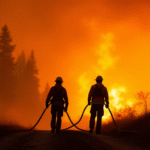Introduction to the Situation in Sinaloa
During the 2024-2025 school year, children and adolescents in Sinaloa faced the loss of at least 30 days of classes due to disruptions caused primarily by violence and insecurity across various municipalities, according to an analysis by the non-governmental organization (NGO) Mexicanos Primero.
Adverse Conditions Affecting Education
The interruptions in classes added to a series of adverse conditions that negatively impacted the school year, including institutional instability, structural failures in infrastructure, and incomplete implementation of national educational policies.
- Two weeks after the conflict erupted in September 2024, the Secretaría de Educación Pública y Cultura reported the closure of 582 out of 978 schools with morning shifts in Culiacán, representing 59.5% of the total.
- In schools that remained open, attendance was minimal: 10% in pre-school, 11% in primary school, and 27% in secondary school.
- By the end of October, there were still 194 schools without in-person classes, which decreased to 97 by December. However, 19% of the student body either did not attend or took classes virtually.
Moreover, between September 2024 and July 2025, at least 50 minors were killed in Sinaloa, according to data from the Fiscalía General del Estado.
Learning Crisis and Additional Challenges
Learning Gaps:
Mexicanos Primero reported that students in basic education in the entity still lack 60% correct answers in reading and mathematics: 53% in primary school and 52% in secondary school. This, they argue, “confirms that the learning crisis remains a deep and persistent reality that cannot be resolved with emergency or short-term strategies, but requires a fundamental, serious, sustained, and continuous educational policy.”
Energy Supply Failures:
Further complicating matters, there were issues with energy supply. In January 2025, the Federal Electricity Commission suspended service in at least 39 schools, causing dark classrooms, high temperatures, and health impacts. This, combined with a heatwave, led to school closures.
Institutional Instability in the Education Department
Mexicanos Primero also mentioned that, besides violence, the education in Sinaloa was affected by instability within the Secretaría de Educación Pública y Cultura (SEPyC), which had three distinct heads in less than a year: Graciela Domínguez resigned in February, followed by Catalina Esparza as acting head, and Gloria Himelda Félix assumed the position in October.
Positive Developments
Despite the challenges, Mexicanos Primero highlighted positive advancements during the 2024-2025 school year, including:
- Increased budget allocations for teacher training and early childhood care
- Initiating strategies for learning recovery
Key Questions and Answers
- What was the main issue affecting schooling in Sinaloa during the 2024-2025 academic year?
The primary issue was narcoviolence causing disruptions in classes, with at least 30 days lost due to safety concerns.
- How did the school closures impact attendance?
In schools that remained open, attendance was minimal: 10% in pre-school, 11% in primary school, and 27% in secondary school.
- What other challenges did Sinaloa’s education system face during this period?
Additional challenges included institutional instability, infrastructure failures, incomplete policy implementation, energy supply issues, and a learning crisis with students lacking proficiency in reading and mathematics.
- What positive developments were noted by Mexicanos Primero for the 2024-2025 school year?
Positive developments included increased budget allocations for teacher training and early childhood care, as well as the initiation of strategies for learning recovery.






